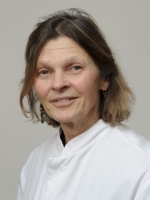MedicalResearch.com Interview with:
Dr. Simple Singh MD
Epidemiologist
Division of Cancer Prevention and Control
CDC
Medical Research: What is the background for this study?
Dr. Singh: This report provides official federal statistics on the occurrence of cancer for 2011 and trends for 1999–2011 as reported by CDC and the National Cancer Institute (NCI). Cancer incidence data are from population-based cancer registries that participate in CDC’s National Program of Cancer Registries (NPCR) and NCI’s Surveillance, Epidemiology, and End Results (SEER) program reported as of November 2013. Cancer mortality data are from death certificate information reported to state vital statistics offices in 2013 and compiled into a national file for the entire United States by CDC’s National Center for Health Statistics’ (NCHS) National Vital Statistics System (NVSS). This report is a part of the first-ever Summary of Notifiable Noninfectious Conditions and Disease Outbreaks — United States, which encompasses various surveillance years but is being published in 2015.
Medical Research: What are the main findings?
Dr. Singh: In 2011, approximately 1.5 million invasive cancers were diagnosed in the United States, an annual incidence rate of 451 cases per 100,000 persons. In the same year, approximately 576,000 persons died of cancer nationally, an annual death rate of 169 deaths per 100,000 persons.
Cancer incidence and death rates increase with age.
Overall, 54% of cancer cases and 69% of cancer deaths in 2011 occurred among persons aged ≥65 years.
Among men in 2011, blacks had the highest cancer incidence and death rates in the United States, and American Indians/Alaska Natives and Asians/Pacific Islanders had the lowest cancer incidence and death rates.
Among women in 2011, whites had the highest cancer incidence rates and blacks had the highest cancer death rates. American Indians/ Alaska Natives had the lowest cancer incidence rates, and Asians/Pacific Islanders had the lowest cancer death rates.
By state, overall (all cancer sites combined) cancer incidence rates in 2011 ranged from 374 to 509 cases per 100,000 persons, and overall cancer death rates ranged from 126 to 201 deaths per 100,000 persons.
Four cancer sites accounted for half of all cases diagnosed in 2011, including 209,292 prostate cancers, 220,097 female breast cancers, 207,339 lung and bronchus cancers (110,322 among men and 97,017 among women), and 135,260 colon and rectum cancers (70,099 among men and 65,161 among women). These four sites also accounted for half of cancer deaths in 2011, including 156,953 lung cancer deaths, 51,783 colon and rectum cancer deaths, 40,931 female breast cancer deaths, and 27,970 prostate cancer deaths.
During 1999–2011, cancer incidence rates declined from 485 cancer cases per 100,000 population in 1999 to 444 cases in 2011. Although
lung cancer incidence declined steadily among men from 1999 to 2011, it increased among women from 1999 to 2005 and has since declined from 2005 to 2011. Prostate cancer incidence declined from 170 cases per 100,000 men in 1999 to 128 cases in 2011. Colorectal cancer incidence declined from 57 cases per 100,000 persons in 1999 to 40 cases in 2011. Female breast cancer incidence declined from 135 cases per 100,000 women in 1999 to 121 cases in 2005, increased to 125 cases in 2009, and declined again to 122 cases in 2011. During 1999–2011, cancer death rates declined from 201 deaths per 100,000 persons in 1999 to 169 deaths in 2011; during the same period, death rates declined for each of the top four cancers.
(more…)
 MedicalResearch.com Interview with:
Jiemin Ma, PhD, MHS
Director of Surveillance and Health Services Research
American Cancer Society
Medical Research: What is the background for this study? What are the main findings?
Dr. Ma: This study is an analysis of long-term trends in mortality for all causes combined and for 6 leading causes of death, including heart disease, cancer, stroke, chronic obstructive pulmonary disease (COPD), unintentional injuries, and diabetes, in the United States from 1969 through 2013. We found that death rates for all causes and for five of these 6 leading causes (except COPD) decreased during this time period, although the rate of decrease appears to have slowed for heart disease, stroke, and diabetes. COPD death rates doubled during this time period, although the rate began to decrease in men since 1999.
(more…)
MedicalResearch.com Interview with:
Jiemin Ma, PhD, MHS
Director of Surveillance and Health Services Research
American Cancer Society
Medical Research: What is the background for this study? What are the main findings?
Dr. Ma: This study is an analysis of long-term trends in mortality for all causes combined and for 6 leading causes of death, including heart disease, cancer, stroke, chronic obstructive pulmonary disease (COPD), unintentional injuries, and diabetes, in the United States from 1969 through 2013. We found that death rates for all causes and for five of these 6 leading causes (except COPD) decreased during this time period, although the rate of decrease appears to have slowed for heart disease, stroke, and diabetes. COPD death rates doubled during this time period, although the rate began to decrease in men since 1999.
(more…)











